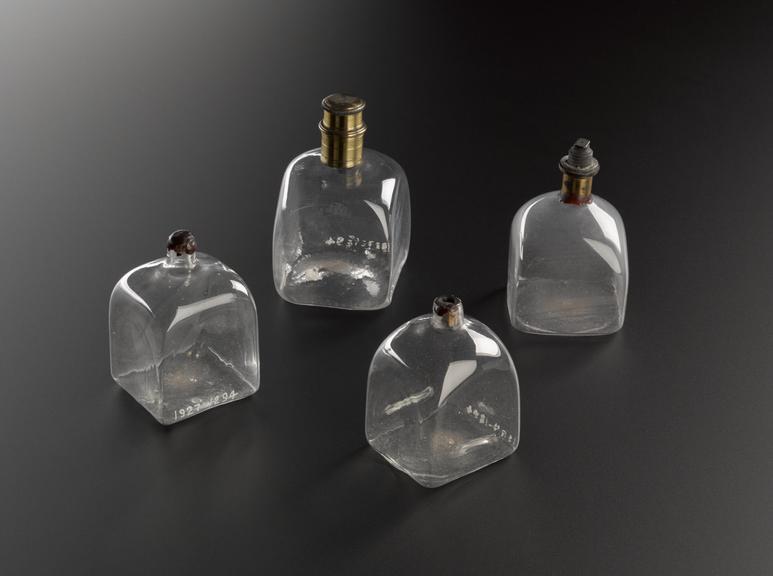
Thin-walled square glass bottle
One of nine thin-walled square glass bottles, five sealed with cork stoppers and wax, two unsealed and two with brass fixtures, made by George Adams, Fleet Street, London, 1761.
The set of thin-walled glass bottles, of which this one is a part, were made for King George III in 1761 by George Adams, very soon after he ascended the throne in 1760. They were part of Adams' pneumatics lectures and was intended to be used with the air pump. They allowed the demonstrator to explain the effect of pressure. The bottles are sealed and when placed into the glass chamber of an air pump and the air removed, they eventually exploded. The bottles were enclosed in wire cages to prevent the exploding glass from hurting the observers. A similar experiment was conducted with the bottles submerged in water.
- Measurements:
-
overall: 95 mm x 65 mm x 60 mm, 0.07 kg
- Materials:
- glass , sealing wax and brass (copper, zinc alloy)
- Object Number:
- 1927-1294 Pt3




















